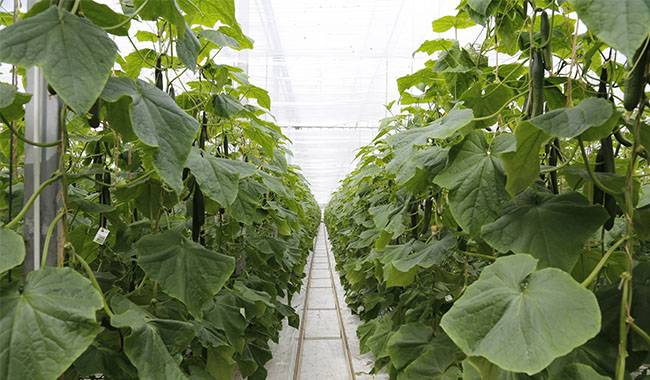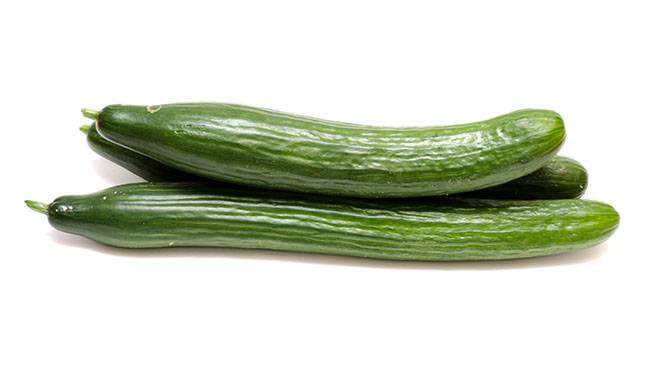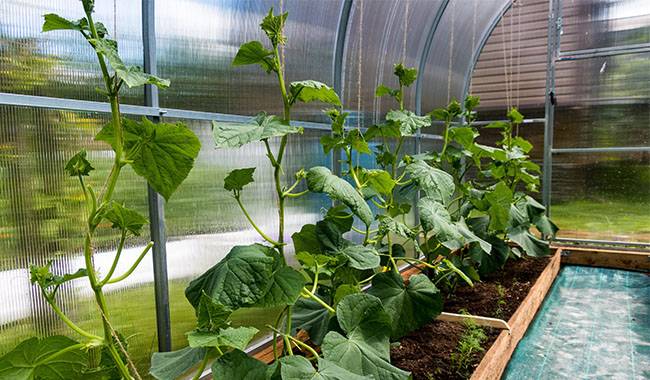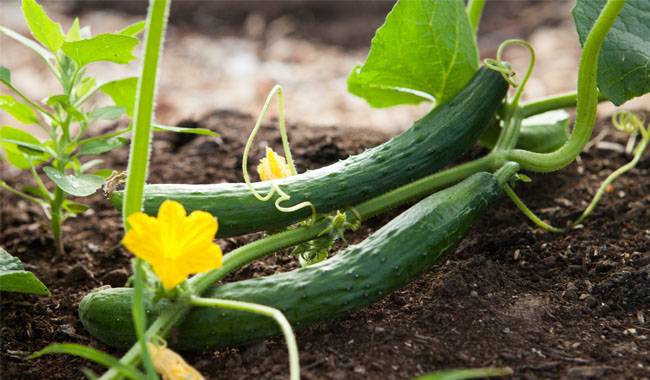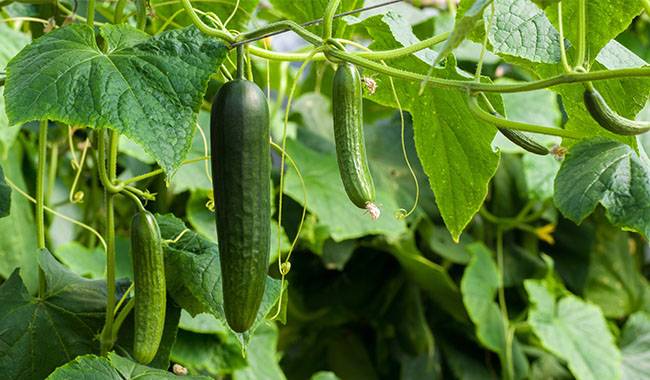
Cucumbers are the most popular member of the pumpkin family for gardeners. A well-grown, healthy cucumber bush has broad, uniformly colored leaves, strong stems, and an abundant harvest. Healthy cucumbers can produce uninterrupted fruit for 2-3 months but are susceptible to pests and diseases that prevent the crop from reaching its full potential.
Recognizing the signs of major problems in cucumber planting and growth can help you treat the plant as soon as possible. This will prevent crop failure and cucumbers will not look “tired” as early as mid-summer.
CUCUMBER DISCOLORATION DUE TO LACK OF WATER
Discoloration causes the leaves of cucumbers to droop or curl inward. Different localized spots often appear on the leaves. Most wilt problems are caused by incorrect watering, although sometimes disease or pests may also be the cause. Proper diagnosis of the cause and rapid elimination of the cause can restore the vegetable to life and prevent the plant from dying completely.
To prevent wilt caused by watering, check the soil regularly. To do this, dip your finger into the soil near the cucumber bush. If the soil feels dry at a depth of about 1inch (2.5cm), water the plants immediately.
The soil is moistened in a radius of 6inch (15cm) around the stem. The water should be soaked to a depth of about 8inch (20 cm). Also, the soil directly near the root neck should be kept dry to avoid fungal diseases.
Irrigation water: Always warm water 77-82°F (25-28°C). Do a weak flow so as not to irrigate, not to flush or hurt the roots, as it has a cucumber surface. Cucumber planting can be watered in the morning or in the evening immediately after the heat subsides.
When it is hot, cucumber planting needs more watering because the soil dries out faster. If the soil feels wet or soggy, reduce the amount of watering and let it dry out slightly.
In the hot summer months, it is best to put a layer of mulch at least 2inch (5cm) thick on the cucumber planting bed to slow down evaporation and keep the soil moist. Straw, grass clippings, and peat can be used as mulching materials. Mulch also makes life easier for gardeners by suppressing weed growth and preventing plants from competing for water, nutrients, and sunlight.
On particularly hot days, even mulched cucumbers may wilt slightly, but they should recover quickly when the temperature drops overnight.
Sometimes the sudden change in temperature between day and night can also cause stunted growth and yellowing of the leaves.
LEAVES TURN YELLOW DUE TO LACK OF NUTRIENTS
Nitrogen fertilizer can be given to cucumbers when the young shoots start to grow at planting. Nitrogen deficiency can lead to poor growth and yellow leaves. If a lack of nutrients is the problem, the leaves will quickly turn bright green.
Nutrient deficiencies can occur at any time during the growing season, in which case the plants do not develop and the ovaries become soft and deformed. In addition to nitrogen deficiency, cucumbers often suffer from potassium deficiency. In this case, the bed needs to be watered with a solution of potassium sulfate, nitrogen, phosphorus, or wood ash.
Amateur gardeners have also noticed the positive effect of bread sauce on cucumbers. To prepare it, you need to fill a bucket 2/3 full of bread crusts, pour water on it, and put it under the press for a week. The infusion needs to be diluted three times at the time of fertilization. If desired, universal fertilizer can be added at a rate of 50 grams per 12 liters of water.
YELLOWING OF CUCUMBER LEAVES CAUSED BY FUNGAL DISEASES
Cucumber plants suffer from a variety of fungal diseases, but powdery mildew and false powdery mildew tend to be the most damaging to the crop. Powdery mildew causes white to gray spots to develop on the leaves and stems. False powdery mildew initially appears as small yellowish spots on the lower, older leaves. Over time, these spots grow and coalesce, and the leaves turn brown and die.
Both pathogens often cause stunting, deformed leaves, and premature defoliation. The pseudomelanosis pathogen thrives in cool, moist conditions, while the powdery mildew fungus prefers dry, warm, humid weather.
Cucumbers can also stop growing due to the development of anthracnose (copper mold). This is a disease in which brown necrotic spots appear on leaves, stems, and fruits, eventually turning into sooty sores or holes. Control is to water the plants with a 1% Bordeaux solution and repeat once in 2-3 days until no new disease symptoms appear. At the same time, it is best to remove all damaged parts of the plant.
CONTROL OF FUNGAL DISEASES OF CUCUMBER
Preventing the spread and growth of the fungus helps to observe some agronomic techniques: do not water the cucumber from above, as this will increase the humidity around the plant. Place cucumbers far enough apart to ensure air circulation around each plant. If the disease has just started, simply tear off the affected leaves to control the disease.
Chlorothalonil has proven to be an effective biological agent for the prevention of fungal diseases. However, the instructions must be followed before the disease. If the problem has gone so far that the lesions are already severe, then it is necessary to resort to chemical agents.
Soil solarization is also a measure to prevent the development of the fungus. In this case, raising the temperature of the soil by heating it with sunlight under a transparent film will kill the fungus in the soil. To do this, cover the soil of a cucumber bed with clear plastic sheeting for 4 to 8 weeks when the daytime temperature rises above 78°F (26°C).
VERTICILLIUM WILT OF CUCUMBER
Verticillium wilt, which affects many crops including cucumber, is unfortunately untreatable. The fungus affects the capillary system of the cucumber, which prevents proper water transport. As a result, yellowing and wilting of the leaves will occur and you may also notice light brown streaks along the stem.
To determine the diagnosis, the stem can be cut near the nodules. In Verticillium wilt, streaks will appear inside the stem. Alternatively, if the root is cut across the stem, the same brown streaks will be noticed. If the disease is confirmed, destroy all infected plants immediately to prevent the fungus from spreading.
To avoid verticillium, initially select varieties that are resistant to the disease. In addition, a clear crop rotation is necessary. In other words, do not plant cucumbers where potatoes, peppers, or tomatoes were previously grown.
LACK OF SEEDS IN CUCUMBERS
Lack of fruit due to insufficient flowering can be triggered by a number of pests, including nematode infestation. Soil nematodes feed on the roots of the plant, resulting in stunted growth and lower yields.
Improper plant spacing can also lead to a low fruit set. When cucumber bushes are planted too close together or too far apart, pollination is affected and plants may have more leaves and fewer flowers and fruits.
Cucumbers are best planted horizontally, 27inch (70cm) to 40inch (1m) between holes and 31inch (80cm) to 40inch (100cm) between rows. If cucumbers are planted vertically, the distance between clumps is 13-15inch (35-40 cm).
Cucumbers on the other side of the trellis were planted at a distance of 17-23inch (45-60 cm). The second row is planted in a similar way, at a distance of 31inch (80 cm).
By the way, gardeners usually observe higher productivity (2-3 times) when cucumbers are planted vertically on the stand. This may be due to the fact that the leaves receive more sunlight for successful photosynthesis.
Part of the reason for the higher yield is also that cucumbers on trellises are easier to pick because they are easier to spot and you are less likely to miss large overripe fruits. It’s also easier to control pest and disease problems when growing cucumbers vertically.
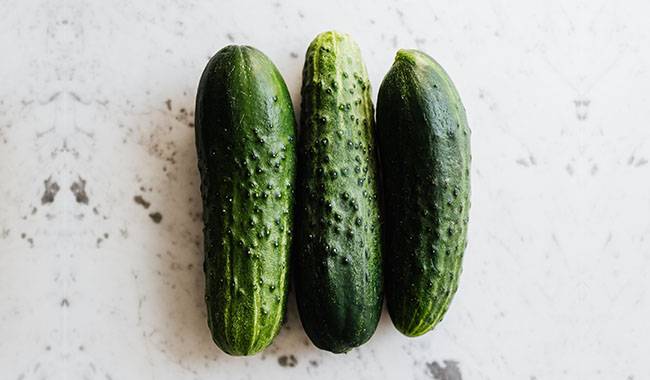
HOW CAN I INCREASE THE NUMBER OF SEEDS?
If the first two or three flowers on a young plant are fertilized, shoot growth slows down because the plant thinks its main task is complete – the seeds are set to produce offspring. But if the first female flowers fall off naturally or are deliberately plucked, the plant takes this as a message that it needs more flowers and fruit, and its growth and development increases.
Therefore, it is ideal to pluck the first few ovaries in order to increase production. It is also important to prune the main stem as the ovaries are mainly produced on the lateral buds.
Do not forget to stimulate the fruit and harvest the greens regularly. In this case, the more often they are collected, the higher the yield will be. Rhubarb ripe cucumbers should not be eaten if the fruit is allowed to fully ripen and the plant temporarily stops bearing fruit. This is most often the reason for the low yield of cucumbers from “weekend” farmers.
INSECT PESTS
The main pests of open-field cucumbers are melon aphids. Spider mites and whiteflies damage cucumbers in greenhouses. To detect pests in time, regularly check the back of the leaves, which is where they are most often found. Other signs of infestation – the leaves begin to wilt and curl, they have discolored yellow spots or dots.
To fight the lice, acaricides are used, and insecticides help against the whiteflies. It is best to use a systemic means. Aphids are susceptible to most contact and systemic acaricides. Pest control is especially important because pests can transmit viral diseases that are difficult and sometimes impossible to cure.
How can I extend the fruiting period of my cucumbers?
By August, cucumbers are usually “tired” and no longer bear fruit. When planting cucumbers horizontally, it is best not to disturb the branches that are located at ground level. They will form new roots to additionally nourish the plant, which means that the fruit will be able to remain at a level.
Watering at this time is done only in the morning and in a very moderate amount in the absence of precipitation. At night, however, there is enough moisture in the air for the cucumbers to be able to absorb it through the leaves.
As late summer approaches, the air temperature decreases, and as a result, the roots’ ability to absorb nutrients from the soil decreases, at which point foliar feeding with soluble fertilizer should be switched to.
To protect cucumbers from late summer temperature fluctuations that can adversely affect yields and the overall condition of the plant, the bed can be covered with polyethylene film or thick fleece material at night. Also under the film, you can hide the cucumbers from prolonged cold rains.
If cucumbers have not been mulched by August, it is best to do so now to smooth out the temperature differences in the soil. Planting fall-flowering or long-flowering plants (anemones, marigolds, heliotrope) near the cucumber bed will attract insects for successful pollination.
Of course, the most reliable way to extend the fruiting period of cucumbers is to regularly replant young cucumber seedlings in several terms.




